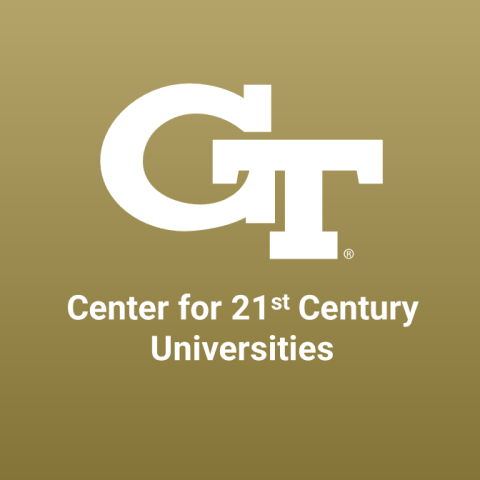
Moving microcredentials forward: how universities are incubators and early adopters
The non-traditional learner is shifting to become the “new traditional learner”, as the era when an undergraduate degree suffices for an entire career recedes rapidly. Many adult learners are not interested in obtaining additional degrees. Instead, amid fast technological change, including the advance of artificial intelligence (AI) and escalating demand for a highly skilled workforce, these new traditional learners are focusing on acquiring a more compact, meticulously curated skill set that will efficiently propel them on to the next stage of their career journey.
In this light, microcredentials have emerged as a novel tool to collect and validate a person’s lifelong educational journey. And higher education (HE) can serve dual roles as an incubator and early adopter. Incubation in authentic educational contexts allows for the emergence and solidification of best practices, schemas and use cases for education, employment and beyond. Early adoption allows HE to innovate and iterate to meet the needs of future learners and industries.
- Resource collection: The business of online education
- Learning by doing: practical tips from 10 years of making Moocs
- Resources on lifelong learning
Projections indicate that about 40 per cent of the workforce will require significant augmentation of their skill set within three years. According to the consultancy McKinsey & Company, about 375 million individuals will transition between jobs or shift entire occupational categories in the next seven years. At the same time, the US (along with many other countries) has an ageing population and lengthening active workforce participation, necessitating continuous job training and education – lifetime learning – that is widely accessible.
HE must reconceptualise educational offerings to better cater to the needs of the dynamic future learner population, as explained in Georgia Tech’s 2018 report Deliberate Innovation, Lifetime Education. Learners will need exposure to “whole-person skills” and educational experiences that emphasise metacognition, communication, synthesis, drive, persistence and other character values that are predictors of an individual’s ability to adapt to rapid change to keep pace with their industry, according to the report.
HE must also evolve to deliver personalised education as smaller, discrete chunks. This “whole person” and piecemeal approach will give learners the capacity to customise education that is relevant to different points in their career – or lifetime.
Microcredentials appeal to the new traditional learner in leveraging advances in AI and personalisation. Microcredentials can define attainment, mastery and verification at a more granular level – a skill or competency – than can a traditional degree course. Education innovation will transform lifetime learning in two main ways: compacting instruction into digestible bites and standardising microcredential usage in (and beyond) HE.
Making qualifications stackable and personalised
First, introducing microcredentials as a mode of course instruction helps to create small packages of knowledge that can either stand alone or build into a stackable, personalised credential. However, this transformation process is not trivial. Implementation requires our instructional, accreditation and technological stack to evolve to meet the needs of each learner. Personalised learning must understand the learner and their journey towards skills attainment and mastery status. Technology must pivot from providing rote instruction to delivering personalised instruction, so that instruction builds on the learner’s journey and skills. This shift reduces instructional redundancy and optimises the learner experience to focus on the acquisition of new knowledge. In future, the concept of a “course level” skill and mastery will be outdated and hazy; a more fluid continuation towards skills and competencies will become the norm.
Until such time as instructional design shifts to being truly personalised, we must be intentional about embedding microcredentials within instructional materials to provide verification of knowledge and skills attainment and mastery, no matter the intended destination.
Evidence of skills and attainment to boost employability
Second, microcredentials can give credibility and visibility to a learner’s specific and evidence-based skills, and so increase their employability. Stakeholders, such as hiring managers, need trusted proof or verification of skills to fully appreciate the value of learning credentials.
One way to build trustworthiness in microcredentials is to embrace common standards and best practices, such as clear naming conventions, credit equivalencies and consistent level definitions. 1EdTech’s Comprehensive Learning Record (CLR) standard, which helps describe and showcase verifiable learner records, situates microcredentials in a map of lifetime learning accomplishments beyond the classroom. The Digital Credentials Consortium (DCC), whose founding members include Georgia Tech, collaborates with global institutional leaders to design best practice around academic microcredentials and verification.
Another avenue towards trustworthiness is to align course design standards, industry standards and accreditation requirements. Microcredentials can provide learners with tangible and up-to-date knowledge and skills for the job market. Naturally, it becomes crucial in the course design to ensure rigour in assessing a learner’s competence and ultimately foster trust and credibility with the credentials that the learner will earn.
For rigour and trust, a two-step approach is required. First, university experts must fold in accreditation requirements and industry standards to situate common language between instruction and application, and iterate on this cohesion at regular intervals to keep pace with innovations, new technologies and societal change. Second, course designers and instructors must define skill competency and expertise attainment across an industry standard and within the courses themselves. This shared-meaning model facilitates the trust beyond the classroom.
Transparency and plain language for real-world credentials
As part of Georgia Tech’s microcredential pilots, we identified an opportunity to reinforce microcredential value and trust for our early-adopter learners. We found opportunities to switch technical terminology and language to match the reality of a learner’s digital identity. Digital wallets are a new concept for our learners, with the closest analogue being digital payment methods such as Apple Pay. Much like how pedagogy is baked into course design, so too should be the technical microcredential verification process; it should be transparent to end users and should support, not obfuscate, skills attainment. Our findings also underlined a need for plain language to situate microcredentials in authentic, real-world applications and individual skills and competencies rather than a course or degree certification. Microcredentials should reflect the anticipated future state of industry and our learners.
Through these efforts to move microcredentials forward, instructors and designers can incubate transformational change with subtle updates to course design and interoperability through intentional course cross-pollination across an academic programme journey. This transformation enables HE to serve its historical roots as a laboratory for change and to embrace a future of lifetime and continuous learning.
Jeonghyun (Jonna) Lee is director of research in education innovation, and Eric Scott Sembrat is director of digital learning technologies, both in the Center for 21st Century Universities (C21U) at Georgia Tech.
If you would like advice and insight from academics and university staff delivered direct to your inbox each week, sign up for the Campus newsletter.




